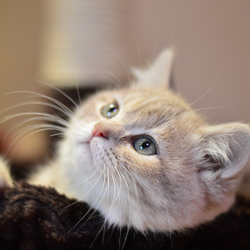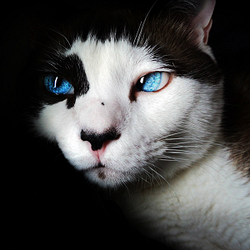
Intravenous Catheter & Fluids
Our surgery patients will have an area on their leg shaved and an intravenous catheter placed to allow the medical staff to have easy access to a vein. During the anesthetic procedure, intravenous fluids help to maintain blood pressure and body temperature. Administration of intravenous fluids during an anesthetic procedure will also prevent dehydration of the patient and allow for a quicker recovery period.
Our surgery patients will have an area on their leg shaved and an intravenous catheter placed to allow the medical staff to have easy access to a vein. During the anesthetic procedure, intravenous fluids help to maintain blood pressure and body temperature. Administration of intravenous fluids during an anesthetic procedure will also prevent dehydration of the patient and allow for a quicker recovery period.

Patient Monitoring
A veterinary technician is dedicated to your pet during anesthesia and sedation and will continually assess your pet’s heart and respiratory rate, blood pressure, and other vital signs. Monitoring allows the veterinarian to formulate an anesthetic plan that will create the best possible anesthetic experience for your pet.
A veterinary technician is dedicated to your pet during anesthesia and sedation and will continually assess your pet’s heart and respiratory rate, blood pressure, and other vital signs. Monitoring allows the veterinarian to formulate an anesthetic plan that will create the best possible anesthetic experience for your pet.

General Anesthesia
For some procedures, general anesthetics are necessary. Anesthesia can prevent your pet from feeling pain during a surgical procedure and can create a level of semi-consciousness needed during delicate operations. Modern anesthesia is generally quite safe; to further lower risk, we perform a physical examination and run blood work before the procedure to catch any underlying health issues. In addition, we follow a specific anesthetic protocol including monitoring vital signs during the procedure to ensure the safety of our patients.
We begin most anesthetic procedures by administering medications which prevent pain, alleviate any anxiety the pet may be experiencing, and cause sedation. We then administer an intravenous drug to provide complete anesthesia and place a breathing tube into the patient’s trachea (windpipe). To maintain the state of unconsciousness, we deliver a gas anesthetic in combination with oxygen through the breathing tube. This anesthesia can be adjusted per the patient’s vital signs to deepen or lighten the amount of anesthetic administered as needed. Gas anesthetics are processed mainly through the lungs and allow for quick recovery as soon as the patient begins breathing oxygen.
Our doctors would be happy to address any questions or concerns you may have about your pet receiving anesthesia.
For some procedures, general anesthetics are necessary. Anesthesia can prevent your pet from feeling pain during a surgical procedure and can create a level of semi-consciousness needed during delicate operations. Modern anesthesia is generally quite safe; to further lower risk, we perform a physical examination and run blood work before the procedure to catch any underlying health issues. In addition, we follow a specific anesthetic protocol including monitoring vital signs during the procedure to ensure the safety of our patients.
We begin most anesthetic procedures by administering medications which prevent pain, alleviate any anxiety the pet may be experiencing, and cause sedation. We then administer an intravenous drug to provide complete anesthesia and place a breathing tube into the patient’s trachea (windpipe). To maintain the state of unconsciousness, we deliver a gas anesthetic in combination with oxygen through the breathing tube. This anesthesia can be adjusted per the patient’s vital signs to deepen or lighten the amount of anesthetic administered as needed. Gas anesthetics are processed mainly through the lungs and allow for quick recovery as soon as the patient begins breathing oxygen.
Our doctors would be happy to address any questions or concerns you may have about your pet receiving anesthesia.

Local Anesthesia
If your pet is having a minor surgical or diagnostic procedure performed, we sometimes use a local anesthetic to help control pain. For example, when we perform a biopsy (in which a small portion of tissue is surgically removed so it can be examined), we often use a local anesthetic. Local anesthetics cause a loss of sensation in the area where the procedure is being performed. We sometimes use a sedative and/or anxiolytic (anti-anxiety medication) in combination with the local anesthetic to keep pets calm during a procedure.
Please contact us if you have any questions or concerns about your pet receiving local anesthesia or about the procedure for which your pet is scheduled.
If your pet is having a minor surgical or diagnostic procedure performed, we sometimes use a local anesthetic to help control pain. For example, when we perform a biopsy (in which a small portion of tissue is surgically removed so it can be examined), we often use a local anesthetic. Local anesthetics cause a loss of sensation in the area where the procedure is being performed. We sometimes use a sedative and/or anxiolytic (anti-anxiety medication) in combination with the local anesthetic to keep pets calm during a procedure.
Please contact us if you have any questions or concerns about your pet receiving local anesthesia or about the procedure for which your pet is scheduled.